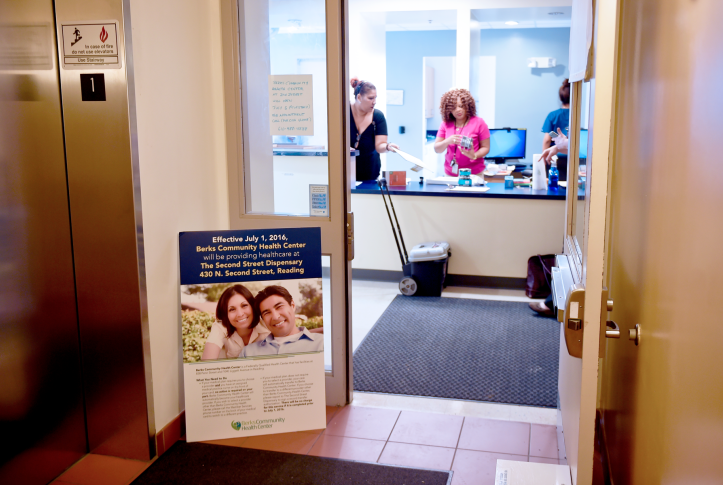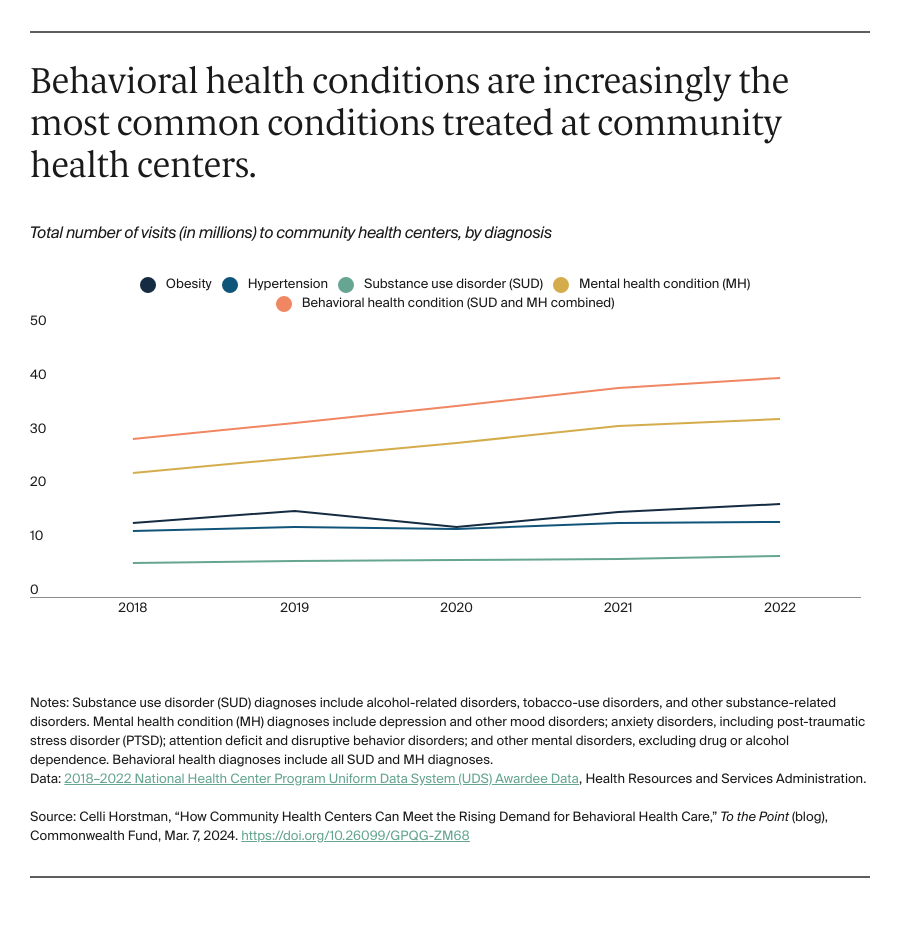Between 2018 and 2022, the number of behavioral health–related visits, including mental health and substance use care, at CHCs increased 39 percent. Most CHC visits with an associated diagnosis are for mental health conditions, followed by visits for obesity, hypertension, and substance use disorders.
When asked about their preparedness to treat behavioral health, particularly within the context of the COVID-19 pandemic, one CHC leader said, “I think we were already sort of in a ramp-up mode for behavioral health services. And we were already really trying to recruit behavioral health providers and expand the access to services we already provide.”
This “ramping up” is evident in the national CHC data. In 2018, behavioral health specialists made up 5.7 percent of the CHC workforce; by 2020, it had increased to 6.6 percent. This translates to roughly 5,000 full-time-equivalent providers joining CHCs across the country. These facilities also provided postgraduate training to thousands of specialists each year, which served to grow the workforce as well.
Centers Leverage Telehealth to Ensure Continuous Behavioral Health Care
In 2022, 36 percent of all virtual visits at CHCs were for behavioral health, compared to 9 percent of all in-office visits. Earlier research has found that telehealth allows CHCs to treat patients who might otherwise go without care. It can also improve patient–provider relationships.
A chief medical officer described the benefits of behavioral telehealth, saying, “[W]hen we see patients in person for their medical care, we like to do warm handoffs for behavioral health. And so behavioral health can see them on the spot on that day. But when they can’t, when the patient has to leave, being able to say, ‘Oh, we can set you up a telehealth appointment so that you can still see them from home’ has been a blessing.”
Centers Are Meeting Young People Where They Are
Mental health diagnoses among youth has risen in recent years; rates of overdose deaths have doubled. School-based health centers allow children to receive health care where they already spend their time and have been shown to improve health outcomes and make care more accessible, particularly behavioral health care.
Over half of school-based health centers are sponsored by CHCs and the majority of these centers provide behavioral health care. In 2022, CHCs served more than 950,000 patients in school-based settings. One CHC leader said, “[W]hat we’re working on the most is expanding our school-based health center presence so that we can have behavioral health clinicians on site.”
Another CEO said, “I think we can say with an astounding yes that there has been an increased need for behavioral health mental and health services . . . in our school-based health centers. We have an overwhelming need for practitioners to provide services . . . .” They went on to describe how they received a grant that allowed them to expand their school-based care and hire a dedicated clinician.
CHCs Need Help Building Capacity to Provide Behavioral Health Care
The demand for behavioral health care at CHCs is high and growing. It is also a consistent priority when expanding access to comprehensive care and building center capacity. Centers report challenges from staffing shortages to lack of infrastructure to provide telehealth to funding gaps.
Policymakers have an opportunity to support CHCs in meeting this demand. Recently, Medicare announced it would allow a broader range of providers to deliver behavioral health services, including community health workers, which will allow centers to leverage existing staff. This is an important change, but more can be done.
The Community Health Center Fund, which provides billions in grant funding to CHCs through congressional authorization, has not been significantly increased recently and, due to inflation, has decreased over time. While there is a bipartisan effort to sustain the fund, without substantial increases, center leaders are unsure how they’ll continue to provide comprehensive care to underserved communities, let alone build capacity. Further, policymakers can permanently remove the requirement for community health centers to have an initial in-person visit before beginning behavioral telehealth care, which can limit access for rural and homebound patients.





